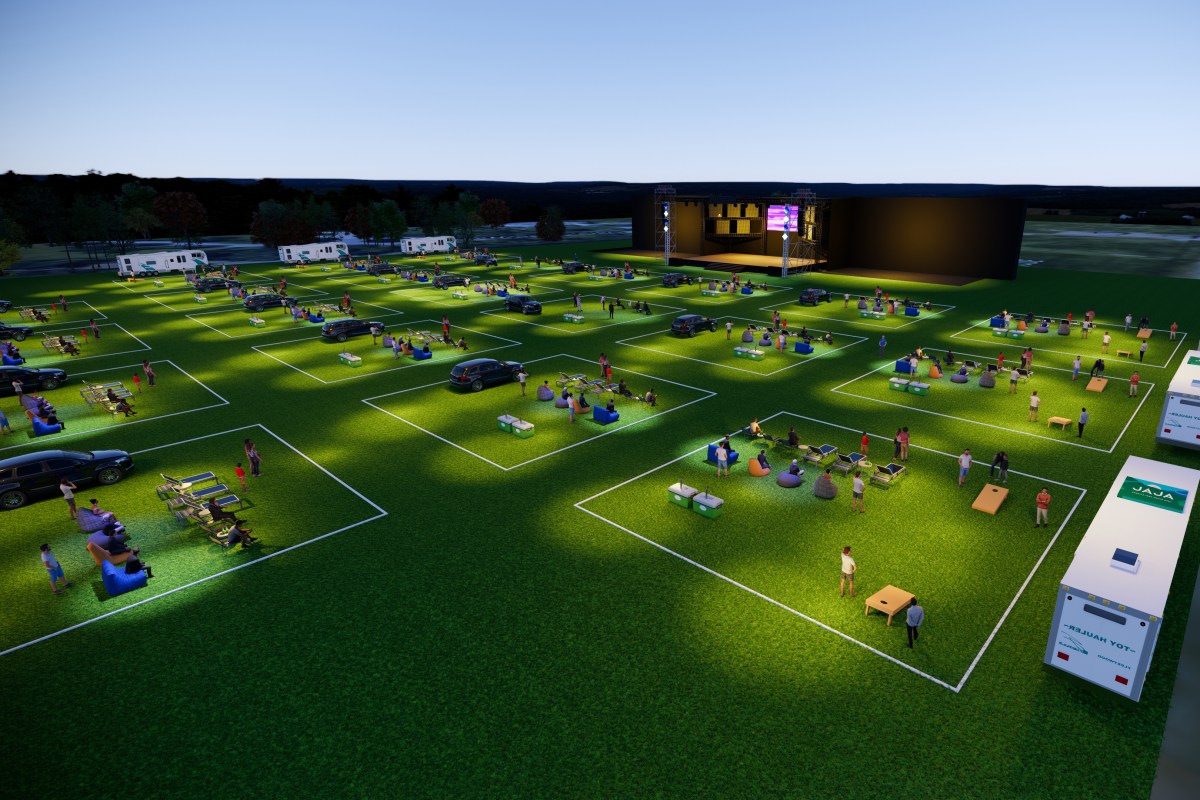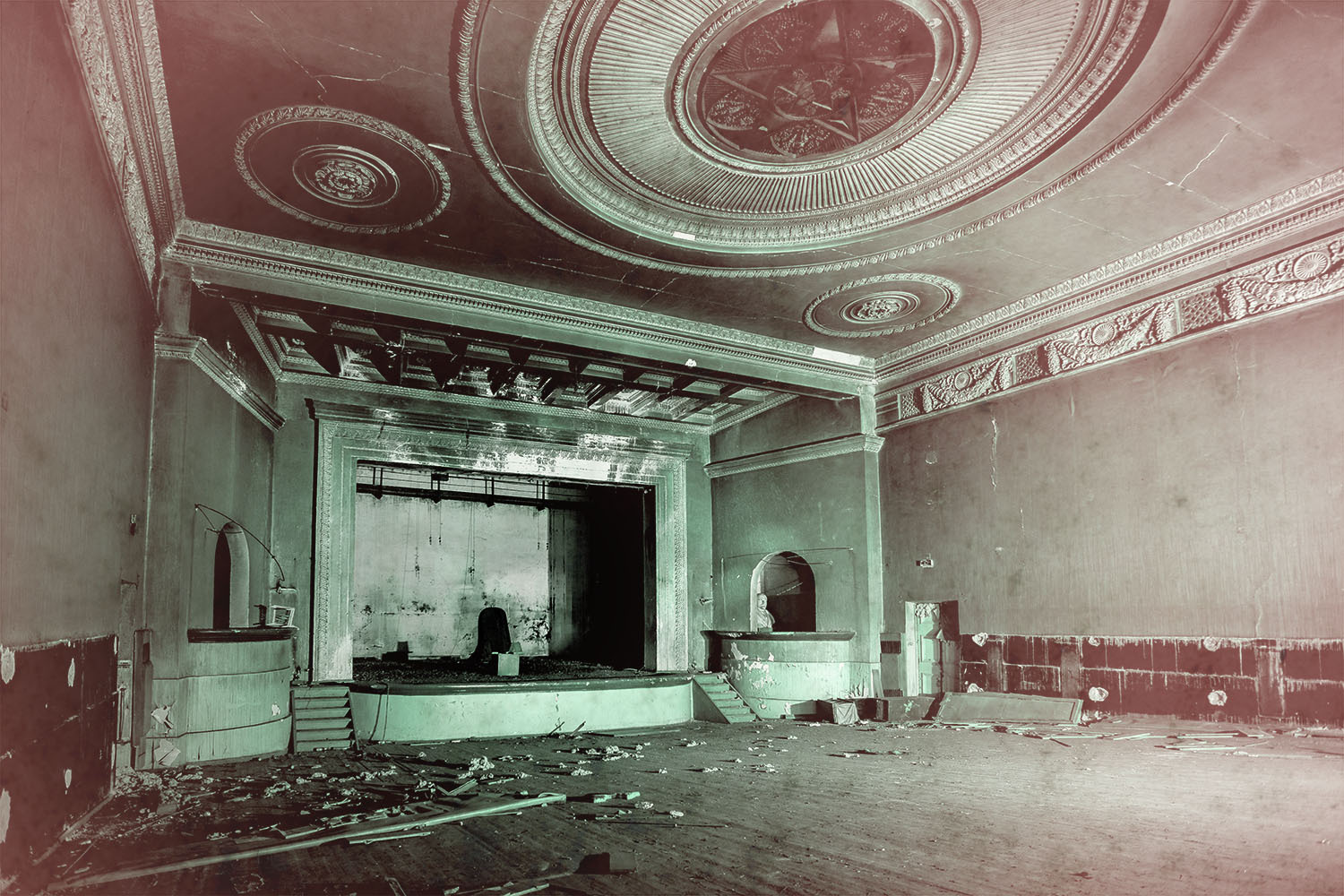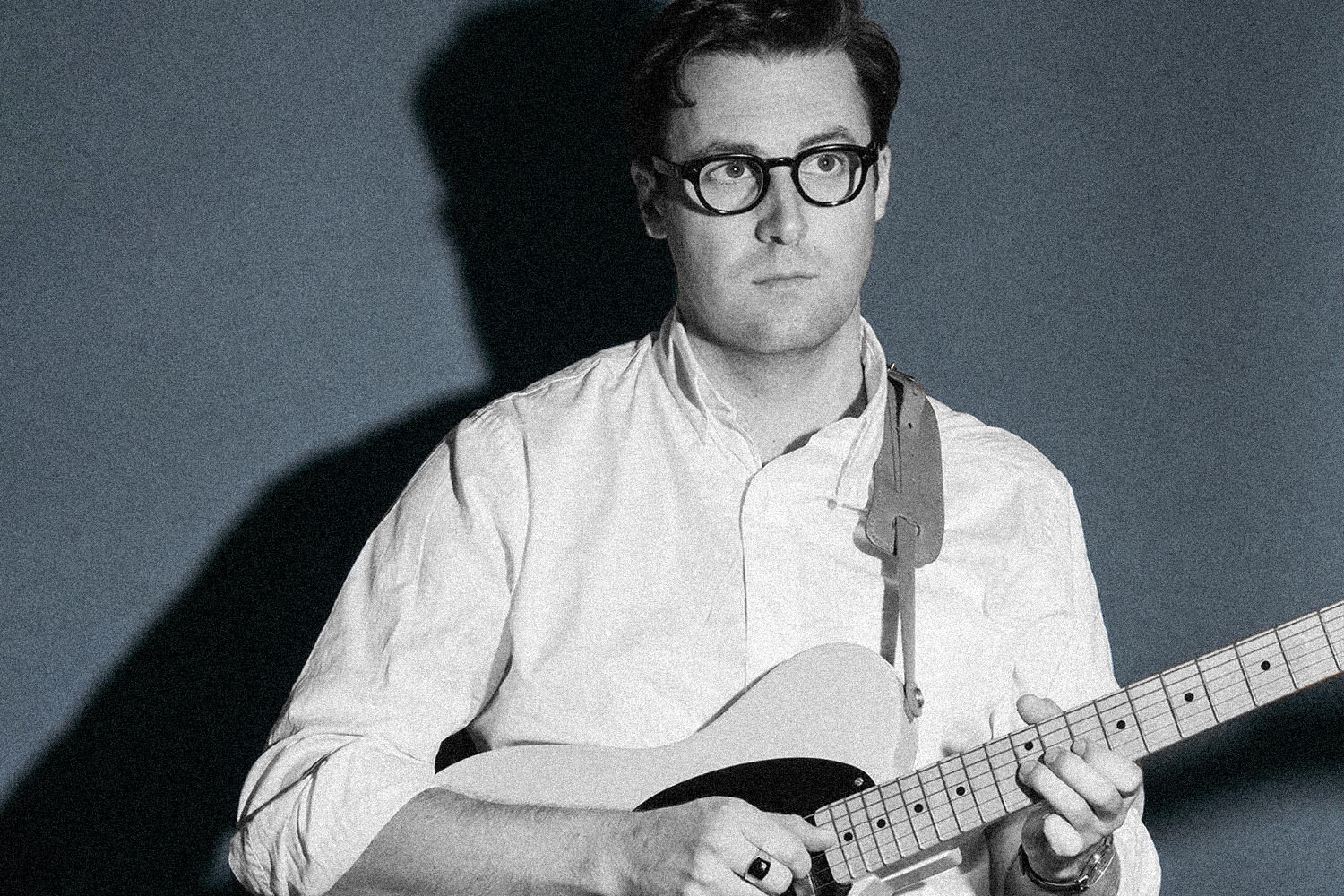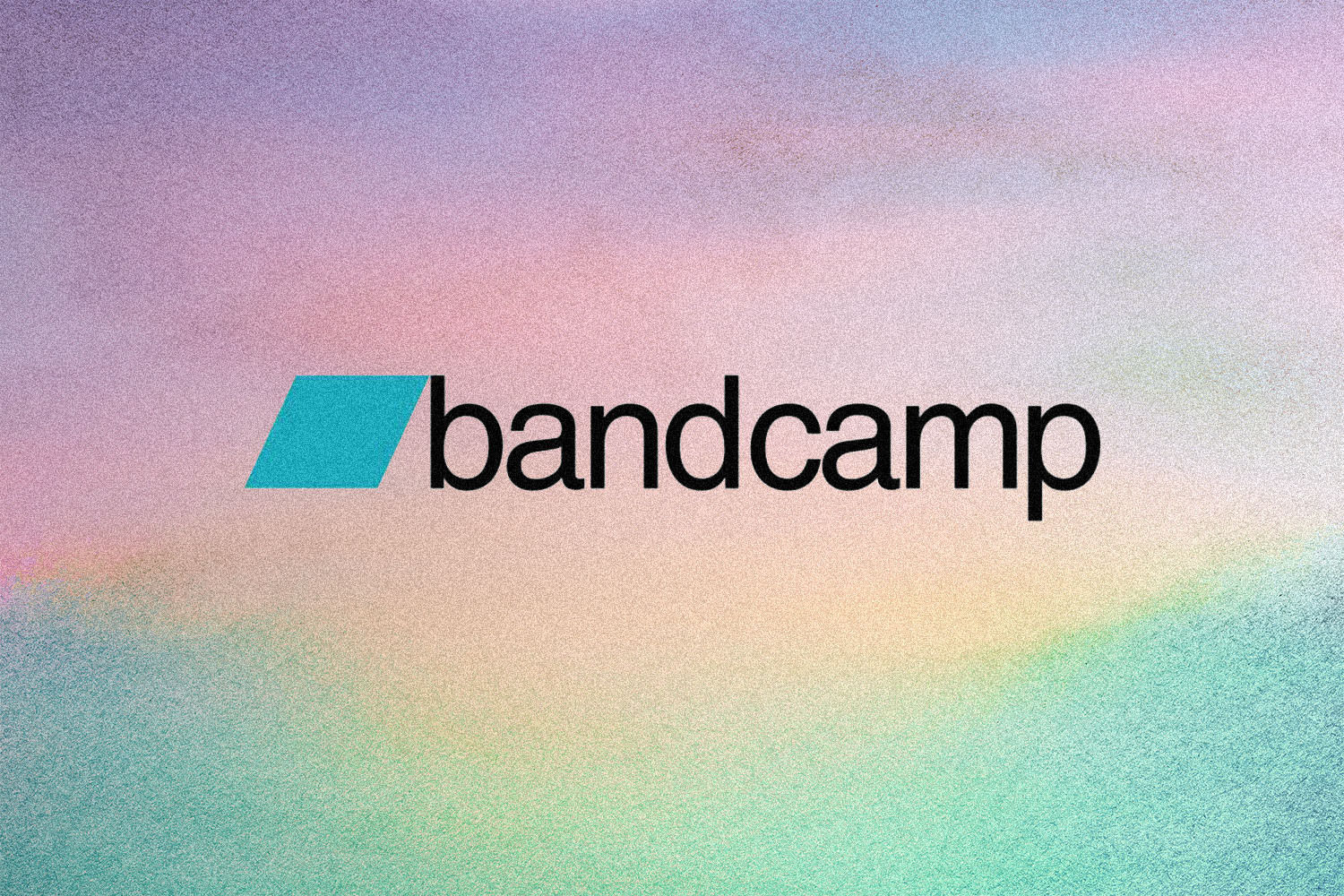As America stumbles through its reopening in the midst of a global pandemic, the issue of live music has largely remained a question mark. Drive-in concerts seem to be the direction in which everything is headed, with acts from the Avett Brothers to Blake Shelton to Brad Paisley announcing plans to play in front of socially distanced crowds again in the coming months.
The question remains, however, as to what these shows will actually look and sound like. Can this new wave of “COVID-safe” concerts deliver something memorable and/or worth the ticket price? And how safe will they really be?
So when we heard that In the Know Experiences plans to kick off a national “socially distanced” concert series for charity called “Safe & Sound” (presented by JAJA Tequila) in the Hamptons this Saturday, we were keen to get some more intel. Not so much because we’re ardent fans of headliners The Chainsmokers, but because if successful, this show could prove to be a blueprint for what we can expect a more elevated version of the live-music experience to look like for the foreseeable future.
It’s an ambitious undertaking, but husband-and-wife team Seth Kaplan and Lia Batkin have 13 years in the game working with artists like Usher and Rick Ross and putting together large-scale experiential activations for events as large as The Super Bowl. To paraphrase the Ghostbusters’ Winston Zeddemore, they have the tools, and they have the talent. So, fingers crossed.
We sat down with Seth via Zoom to chat the genesis of the S+S concept, the logistical challenges event producers are facing and the creative solutions they’re coming up with to reconnect musical artists with their fans IRL. Spoiler alert: this may involve concerts on boats.
InsideHook: So it seems like we’re starting to hear about some live music events in the works, but it also seems like we’re at a point where everyone is still figuring this thing out. How has it come together for you?
Seth Kaplan: We produce events all over and we did two big events at the Super Bowl in Miami right before this [whole pandemic] happened. We also have a travel division where we handle tours for top acts, so we’re really involved in the entertainment space on both the travel side and the event-production side. And all of this really within a matter of two weeks came to a halt. They’re saying “there’s going to be no tours for a year.” Nightlife has kind of ground to a halt. Restaurants. The whole entertainment field was really just on hold.
About a month into it, I was getting phone calls from artists we work with, brands we work with, clients we speak to all the time, and everyone was like, “Wow, we’re home. We’re recording. There’s got to be a way … What are we going to do?”
I was reading something about movies and drive-ins, and I’m thinking, “Hmmm. There’s got to be a cool way to make that part of the client experience and get artists and everyone back out there.” After weeks of going back and forth and just throwing ideas at my wife — she thought I was crazy at first — we put this concept together. What’s important is we didn’t want it to be stale. Not just like a drive-in where you just stay in your car. There had to be this experiential element, making you feel part of the event. Making it interactive but still safe.
We came up with this concept, “Safe & Sound,” and funny enough, it was kind of like the chicken before the egg, where we had to really put it together before we even got permits. And it was a risk, but after the town saw it, they were impressed. Again, the whole point is we really want to support the towns we’re in, small business, local charities, and work with companies and brands that are near and dear to us, to the performing artists, and to the local community.
I think people are really curious about the nuts and bolts of how an experience like this can function in a safe way, as well as what to expect.
First, on the staffing side, everyone on staff is going to receive a pre-show questionnaire asking if you’ve had a fever, where have you been the last 14 days, if you’ve had any symptoms, etc. We’re only doing about 20-person shifts onsite for safety; usually you’d have 100 people on site at once. One guy is doing stage, one guy’s doing sound, one guy is doing venue prep. We’re really separating them in different groups.
Our staff is always in full PPE, masks and gloves the whole time. We have hand-sanitizing stations all over for staff. We have different water stations. We’re doing temperature checks. Beforehand, all staff are going to be tested for COVID. We’re doing rapid testing as well. We’ve tripled the amount of, I call it “safety standards.” or things you would have onsite with a normal event. We actually created this event and entertainment guideline book, which a lot of states are now using. California had a basic one, and we took that 10 times further, and we’re using that across all the cities we’re going to be working in.
From the client perspective, same thing. Before anyone receives a ticket, they’re going to receive a similar questionnaire, same kinds of questions. You’re going to receive a PDF ticket, as well as a parking credential which goes in your trunk, so when you arrive you never even have to roll down your window. The staff is going to see your parking credential, and based on your ticket category, they’ll direct you into your spot.
There’s a 20’ x 20’ area for platinum, 20’ x 15’ for gold. There’s going to be lounge chairs there for you, you’re able to get out of your car and really hang out within your area. Each of these are six feet apart and following the highest guidelines.
And then once you’re in your area?
So what we’re doing is every ticket receives this VIP cooler with kind of your essentials for the night and your PPE gear. There are going to be non-alcoholic beverages, waters, food. We have Sushi by Bou. We have Carbone. Some great companies like Goldberg’s Bagels that are going to provide food for the night. There’s going to be cornhole in your area, Jenga, some other surprises like that. It’s about being outside, being interactive, being with your friends, having some fun finally.
Once you’re in your area, it’s kind of like your safe zone. Within your area, you don’t have to wear a mask — that’s up to you. The only reason to leave your area would be to use the restrooms. We’ve actually put eight times the amount of recommended restrooms that are usually at a music event. At each of those restrooms, there will be Xs to stand six feet apart and socially distance. You’re required to wear a mask, and there’s going to be hand sanitizers plus sanitizing stations literally in every single row. Bathrooms are going to be cleaned every few minutes after use. So again, you only have to leave your area to use a restroom, and once you’re in your area for the night, you’re totally set.
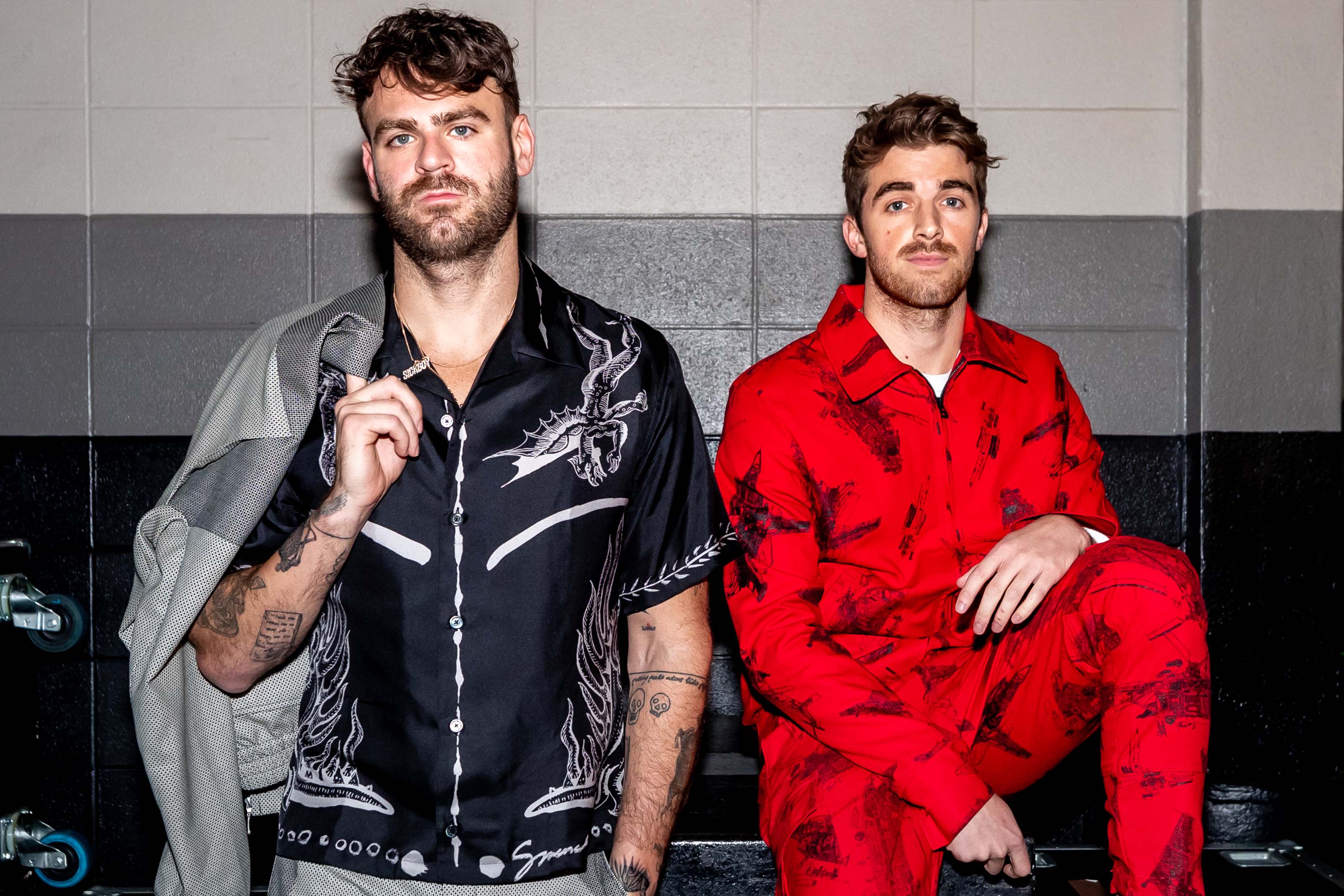
Now that you have the guidelines in place, have you started to envision how they can be leveraged across different types of events?
So it’s funny, we had this idea, and this kind of went public a week ago and everyone’s like, “Wow.” We’ve been getting calls from all kinds of people. We’re working with a charity now, they want to do this kind of concept for their gala this year. They’ll do the live auction on stage, have a performance, have a celebrity chef come and curate the food boxes for the night.
We’ve had a big art festival contact us to possibly do a drive-in art festival this year. We were contacted by another artist to do socially distanced listening parties on a 13-city tour. Artists needs to still get their music out there, and we’re all about coming up with new ideas, new creativity. The one idea we really love, we’re speaking to another artist to do a boat concept with a floating stage and about 100 boats around the stage.
I don’t know if you’ve seen glamping, but another thing we’re thinking of doing is socially distanced glamping events where it could be an overnight … almost like a two-day event where you have your glamping with full bathrooms and you don’t have to leave your area, and doing different genres, whether it’s comedy or music.
Again, we’re all about that experience and bringing artists and brands and everyone involved together. So we can’t wait to try this. We have Nashville, Atlanta, Miami, L.A., Chicago. There are a lot of things in the works.
Are there situations where you think that this may be actually elevating the live-music experience overall? Sort of a COVID silver lining?
I think it’s kind of sped up where this industry was going anyway. Honestly, we noticed, even before this happened, that the trend has been that people are sick of going to 30,000-person arenas and 100,000-person music festivals. As we did more exclusive, intimate events, even at 5,000 people, everyone loved it. But this is taking it one step further where we plan on doing this annually, even when COVID eventually will end, because people like going with their family and friends in a more close-knit way — which I feel like people in general kind of lost that and forgot about it. But now everyone’s like, “Wow, this is brilliant. We missed this kind of closeness.” I think this is going to continue for a long time, I genuinely feel that we’re going to see a lot more of this kind of stuff.
I feel like a lot of that hinges on what the actual experience will be like in terms of the music. Can you speak to that a little bit further?
With this concept, what we want to do is still give you that stadium experience. You’re going to have the pyro, you’re going to have IMAG screens. we’re putting lighting around the whole field. The bracelets for the event are actually LED bracelets that light up the music. We’re going to have PA sound delays throughout the whole field. So literally you’re going to be at this event and have that same music experience you’d feel at a Glastonbury or a Coachella, but in this drive-in environment.
How is it working with the bands themselves?
From a safety standpoint, this only works with less … all these bands are anywhere from three to five people. We’re going to socially distance them on stage six feet apart. Everyone’s being tested. We have a physician onsite, following those safety protocols.
It doesn’t work for like a Gipsy Kings, with 10, 12 band members. It’s got to be these smaller acts. But from the artist’s side, they’re so excited because they’re like, “We just want to get back out in front of our fans.” This is what they live for.
Every band we’re speaking to is basically saying “Hey guys, this is brand new. We don’t know how to do this. You’re the experts. You come to us with what you think it should be.” They’re basically trusting it in our hands and signing off on it. Because again, no one knows how to do this. We’re creating this turnkey operation which we could bring to other promoters and bands and events. So it’s more like “You come up with it, let’s review it and go from there.” That’s the process so far, especially with this first one, and funny enough, the ideas we’re coming up with, bands have been like, “Wow. How have we never done this before?” We’re basically setting the standard for this whole new genre of touring.
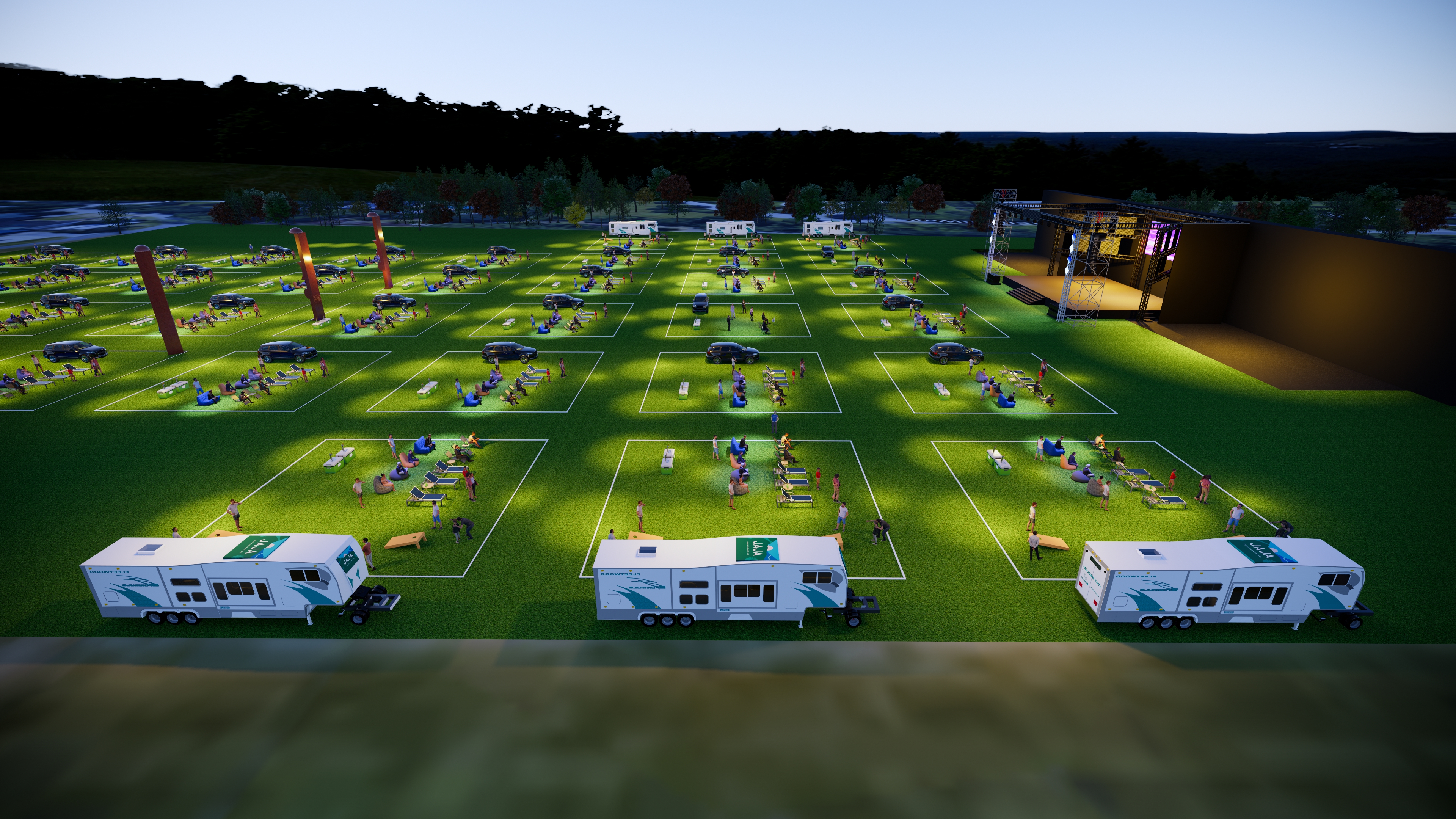
On the fan side, have you guys seen the sort of demand you were hoping for right out of the gate, or do you think this is the sort of thing where there’s gonna be some trepidation and it needs to prove out further before the fan adoption really gets there in a big way?
The demand and interest from the community has been overwhelmingly positive, it’s so awesome to see everyone come together during these times. Within five days, we were 70% sold out, especially the Platinum packages.
In terms of site selection for these kinds of events, what can people expect?
Space is an issue. You do need a lot of space, so that’s a big part of this. That’s why the first ones are in areas where we could have some big fields. Like in L.A., there’s this old airplane hangar overlooking the mountains up in Calamigos. It’s using what’s unique to the area, and we’re picking cities and areas first that have some uniqueness and tying in those local elements.
To give you an example, when we did our Miami event for the Super Bowl, we created a green build from the bottom up on this little island off the Venetian Causeway. We were like, “Hey, Miami has nightclubs, restaurants, and all this stuff, but what’s unique to Miami? It’s the water. It’s the skyline view. It’s being outside.” So we created this 40,000-square-foot open-sided … almost like a tent, but I wouldn’t even call it a tent. It looked like a venue.
What we want to do is, and it’s really important, is mix it up. Every show, even if it’s the same artist, is going to be different. A different surprise, a different element, which in music and touring has gotten really stale in our opinion.
Do you think that baking in a charitable element to the model is something that will help it overall?
Especially in today’s environment, charity is a key element of everything we’re doing. I think it’s super important, again, from the artist standpoint to give back. I think for a while, I don’t know, unfortunately, a lot of times people took this stuff for granted, and people really weren’t giving back as much as maybe they should, and now I think they’re realizing it’s a key part of it. If everyone’s working and all the money’s coming in, especially now, it’s super important to give back to the local communities, to the bigger charities, and really support all the causes out there.
So I think it’s going to bring in more artists. They’re going to want to do it. A lot of people who haven’t in the past are coming to us and saying, “Hey, we even want to donate our time for free or perform or do something just to give back.” And on the fan side, with the proceeds going to charities and things like that, they’re more excited to get out there. It gives you the ability to be outside, have some fun again, support the community, supporting all of these great charities, and help small businesses in each area, which have been really hurt with all the shutdowns. You actually see where the money’s going and you can enjoy what you’re doing as well.
This article was featured in the InsideHook NY newsletter. Sign up now for more from all five boroughs.
